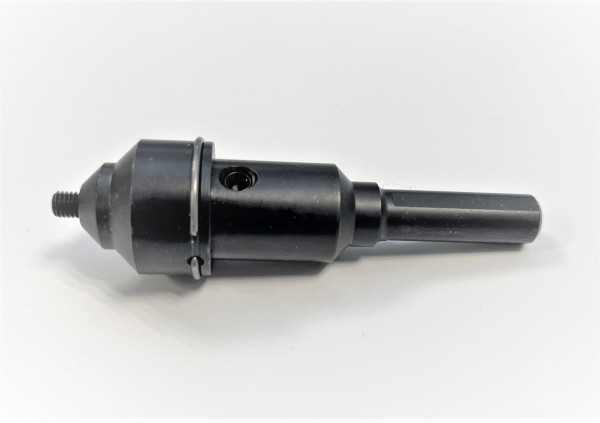Rampa
Rampa® threaded inserts provide a precise, re-usable metric thread in wood, plastics, HPL, composites and light metals. With 28+ years of application expertise, Juno Industries helps you choose the right insert geometry and material for maximum pull-out strength and durability. Free samples available.
What is a Rampa insert?
A threaded screw insert (often called a Rampa nut) has a metric internal thread and a specialised outer thread that anchors in the base material. It’s ideal when long screws aren’t possible or when you need a repeatable, wear-resistant blind connection.
Why use a Rampa insert?
-
High pull-out resistance in soft and thin materials
-
Clean, re-usable metric thread (no wear like direct tapping in wood/plastic)
-
Fast installation; many types are Allen-drive for easy assembly
-
Available in steel, stainless steel, and brass
Which type for which material?
-
SKD & SK – Soft & particle boards: large coarse outer thread, excellent anchoring.
-
SKD330 & SK330 – Medium woods/MDF & particle boards: thinner coarse outer thread, excellent anchoring.
-
ES – Exotic woods & thermoplastics plastics: selftapping slotted outer geometry to reduce splitting, high consistency.
-
BAV/ BAN & BAS – Aluminium & fibre-reinforced plastics: selftapping 3-holes outer geometry robust performance in rigid substrates.
Applications en materials
| Type / model | Material | Internal thread | Outer thread (type) | Minimal qty |
| SK | Steel zinc plated/ stainless steel303/ brass/ stainless steel316 | M4 – M12 | wood (pronounced) | 100 pieces |
| SKD | Steel zinc plated/ stainless steel303/ brass | M4 – M16 | wood (pronounced) | 100 pieces |
| SKD30 | Steel zinc plated/ stainless steel303 | M4 – M8 | wood (pronounced) | 100 pieces |
| SKD330 | Steel zinc plated | M6 – M10 | wood (pronounced) | 100 pieces |
| SK330 | Steel zinc plated/ stainless steel316 | M6 – M10 | wood (pronounced) | 100 pieces |
| SKL | Steel zinc plated/ stainless steel303/ stainless steel316 | M6 – M16 | wood (pronounced) | 100 pieces |
| BL | Steel zinc plated | M5 – M16 | wood (pronounced) | 100 pieces |
| A | Steel zinc plated/ brass | M3 – M12 | wood (pronounced) | 100 pieces |
| B | Steel zinc plated/ stainless steel303/ brass | M3 – M20 | wood (pronounced) | 100 pieces |
| ES | Hardened steel zinc plated/ stainless steel303/ brass/ stainless steel316 | M3 – M20 | slotted selftapping | 100 pieces |
| BAV | Hardened steel zinc plated/ stainless steel303/ stainless steel316 | M3 – M12 | selftapping 3-holes | 100 pieces |
| BAN | Hardened steel zinc plated/ stainless steel303/ stainless steel316 | M3 – M12 | selftapping 3-holes | 100 pieces |
| BAS | Hardened steel zinc plated/ stainless steel303 | M4 – M10 | selftapping 3-holes | 100 pieces |
Tools & installation
-
Manual install: Allen key, or bolt + double nut
-
Pro install: Rampa bits 507, manual tool 512, mechanical driver 515
-
Best practice: perpendicular drilling, light chamfer, remove chips; start at low RPM, high torque and increase gently.
Frequently asked questions about Rampa
In which materials can I use Rampa inserts?
Primarily wood (solid, plywood, particle board, MDF), plastics (ABS, PA, POM, composites), and light metals when the insert with the right geometry is choosen accordingly.
How strong is the connection (pull-out / shear)?
Highly dependent on the receiving material, drill diameter, embedment depth, and insert type. We have various values for Rampa nuts in wood that are specified in ETA 12/0481. We do have supplier data, but exact values can only be obtained through empirical testing, as they are highly material-dependent and application-specific.
Do you provide drawings or 3D files?
Yes. For most Rampa series (B, SKD, SK, SKL, SKD330, ES, ESK, ESD, BAV, BAN, BAS), 3D models are available on www.traceparts.com.
Can I get free samples?
Absolutely. We send up to 4 free samples per size or series to enable assembly trials when a valid VAT number is provided.
Which tools and torque should I use?
Use Allen drive keys for inner hexagon inserts, for slotted inserts we recommend the Rampa 507 bit, for small quantities of inserts without drive, the 512 manual tool or for higher volumes the 515 mechanical tool.
Start low (e.g., 2–5 Nm for M6 in wood) and increase until flush without cracking.









